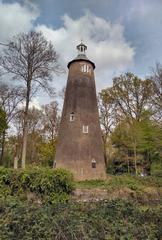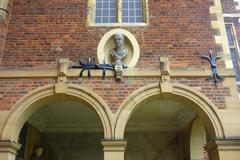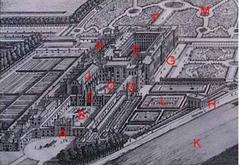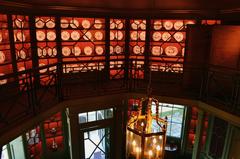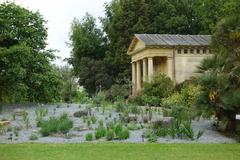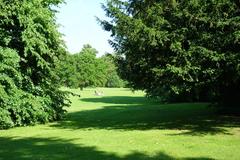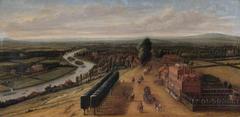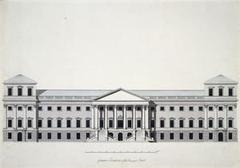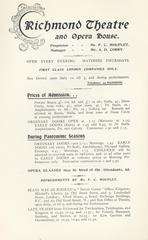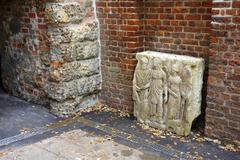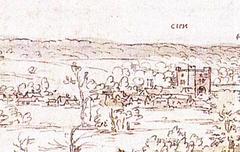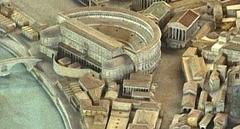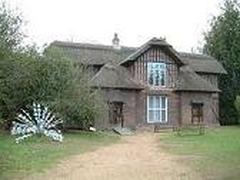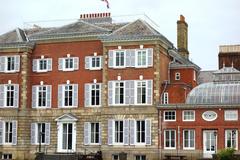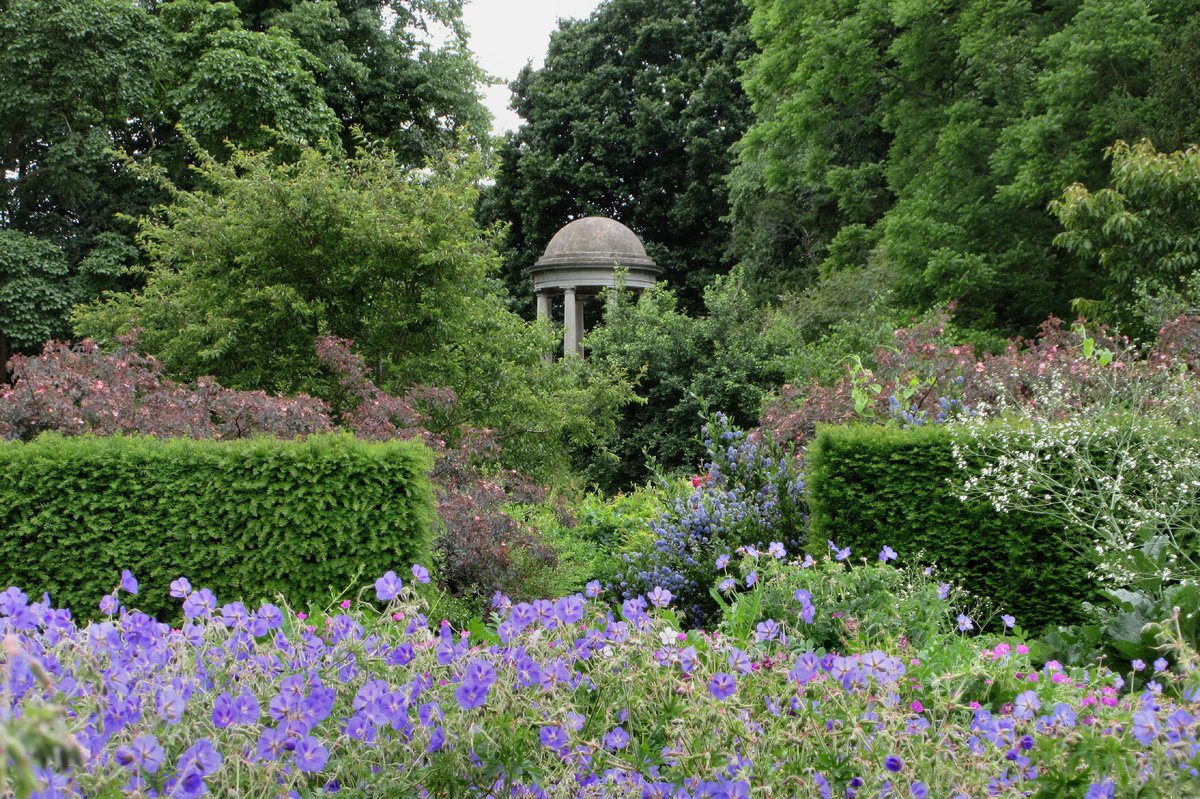
Temple of Aeolus Richmond: Visiting Hours, Tickets, and Historical Sites Guide
Date: 14/06/2025
Introduction
The Temple of Aeolus, gracefully perched within the Royal Botanic Gardens, Kew in Richmond, United Kingdom, is a striking symbol of neoclassical design, mythological reverence, and the English landscape tradition. Originally conceived by Sir William Chambers in the 18th century and later reconstructed by Decimus Burton, the temple stands as a testament to Britain’s fascination with classical antiquity and its enduring commitment to garden artistry. Elevated atop an artificial mound, the temple offers sweeping views of Kew Gardens’ lush landscapes and the broader Richmond area, delighting history buffs, architecture admirers, and nature lovers alike.
As a Grade II listed structure within a UNESCO World Heritage Site, the Temple of Aeolus embodies the harmony between art, history, and horticulture. Visitors can access the temple with standard Kew Gardens admission, take in panoramic vistas, and participate in seasonal tours and events that bring its storied past to life. For current information on visiting hours, tickets, and events, consult the official Kew Gardens website or explore the Kew Gardens Art & Architecture Trail.
History and Architectural Evolution
Origins and Historical Context
Commissioned in 1758 by Princess Augusta, Dowager Princess of Wales, the Temple of Aeolus was part of a visionary transformation of Kew Gardens into a landscape where art and botany would flourish together. Sir William Chambers’ original neoclassical design honored Aeolus, the Greek god of the winds, and mirrored Enlightenment interests in classical mythology and the natural world (Kew Gardens Art & Architecture Trail). The temple’s placement on an artificial hill—constructed from earth excavated during the creation of a nearby lake—was both practical and symbolic, providing a vantage point to observe the gardens and the elements.
Architectural Design and Reconstruction
Chambers’ temple featured a circular plan, domed roof, and Ionic columns, projecting the aesthetic ideals of ancient Greece and Rome (Historical Architecture: Characteristics, Influences, Ambassadors and Sights). Notably, the original structure included a rotating seat for 360-degree views. By the mid-19th century, the temple required restoration. Decimus Burton rebuilt it in stone in 1845, preserving Chambers’ design while ensuring greater durability (Kew Gardens Art & Architecture Trail).
Materials and Techniques
The temple’s original construction mixed brick, stucco, and stone to emulate marble, while the Victorian reconstruction utilized more robust masonry to withstand the British climate (Historical Architecture: Characteristics, Influences, Ambassadors and Sights). The current rotunda is supported by Tuscan columns, and its open colonnade provides stunning views of the Woodland Garden and beyond (Historic England).
Cultural and Symbolic Significance
More than an ornamental folly, the Temple of Aeolus symbolizes the interplay between natural forces and human creativity. Its dedication to Aeolus, the god of winds, and its breezy elevation make it an evocative tribute to the elements (Kew Gardens Art & Architecture Trail). The temple forms part of a network of classical structures at Kew, including the Temples of Arethusa, Bellona, and King William, all commemorating Britain’s naval heritage and the landscape garden movement (Wikipedia).
The temple’s heritage status ensures its ongoing preservation and inclusion in educational programs and guided tours, highlighting its role in the evolution of English garden design and its influence on similar follies across Britain and beyond (Historic England).
Visiting the Temple of Aeolus: Hours, Tickets, and Practical Information
Kew Gardens Opening Hours
- Spring/Summer (March–October): 10:00 am – 7:00 pm (last entry 6:00 pm)
- Autumn/Winter (November–February): 10:00 am – 5:00 pm (last entry 4:00 pm)
- Always check Kew Gardens opening hours for the latest updates.
Tickets and Entry
- Admission: Access to the Temple of Aeolus is included with your Kew Gardens ticket.
- Pricing: Adult tickets start at £19.50–£20; concession and family rates available.
- Booking: Advance purchase via the official ticket page is advised, especially during peak seasons.
Accessibility
- The temple is accessible via paved and gravel paths; the mound may be challenging for some, but accessible toilets and mobility scooter rentals are available (Accessibility Information - Kew Gardens).
- Maps and assistance are available at entrances—consult staff for support if needed.
Getting There
- By Train: Kew Gardens station (London Overground & District Line) is a 10-minute walk away.
- By Bus: Local routes serve the gardens.
- By Car: Limited parking; public transport is recommended.
Facilities and Amenities
- Restrooms: Located near the Kitchen Garden and main visitor hubs.
- Cafés: The Orangery and Pavilion Bar & Grill offer refreshments nearby.
- Shops: Gift shops at entrances provide souvenirs and garden merchandise.
Visitor Experience and Tips
- Best Times to Visit: Spring and early summer for flowers; autumn for foliage; early mornings and weekdays for fewer crowds.
- Photography: Panoramic views and classical architecture make the temple a favorite spot for photos.
- Etiquette: Respect the site by not climbing on the structure, keeping noise to a minimum, and disposing of litter responsibly.
- Weather: The temple is open-air; dress accordingly and bring water.
- Family Visits: Supervise children on the mound and near open colonnades.
Special Events, Tours, and Nearby Attractions
- Guided Tours: Seasonal tours include the temple. Check the Kew Gardens events calendar.
- Nearby Attractions: Palm House, Temperate House, Princess of Wales Conservatory, and the Great Pagoda.
- Richmond Historical Sites: Extend your visit to Richmond Park, Marble Hill House, Richmond Bridge, and the historic riverside (Visit Richmond).
Conservation and Community Engagement
The Temple of Aeolus is safeguarded as part of Kew’s UNESCO World Heritage status and the Richmond Riverside Conservation Area (Richmond Riverside Conservation Area Appraisal). Continuous restoration and educational outreach ensure the temple’s legacy for future generations, supported by Kew Gardens, local authorities, and organizations like the Richmond Local History Society (Richmond Local History Society).
Frequently Asked Questions (FAQs)
Q: Is there a separate fee for the Temple of Aeolus?
A: No, it is included with Kew Gardens admission.
Q: Are there guided tours featuring the temple?
A: Yes, available seasonally—see the events calendar.
Q: Is the temple wheelchair accessible?
A: The approach is via accessible paths, though the final incline may be challenging.
Q: When is the best time to visit?
A: Spring and summer for blooms and mild weather; early mornings or weekdays for fewer crowds.
Q: Can I take photographs?
A: Yes, photography is encouraged.
Visuals and Digital Resources

Alt text: Temple of Aeolus surrounded by greenery in Kew Gardens, Richmond.
Sustainability and Responsible Tourism
Kew Gardens is dedicated to conservation and sustainability. Please use recycling bins, avoid damaging plants, and support Kew’s mission by purchasing tickets and donating if possible.
Plan Your Visit and Stay Connected
- Download the Audiala app for guided tours, maps, and exclusive content.
- Follow Kew Gardens and Richmond tourism channels on social media for updates and inspiration.
Summary and Call to Action
The Temple of Aeolus at Kew Gardens remains a captivating blend of classical architecture, historical depth, and natural beauty. Its preservation and prominence within Richmond’s cultural landscape make it a must-see for visitors seeking to experience the finest in British garden heritage. To make the most of your visit, purchase tickets in advance, check accessibility options, and explore related sites across Richmond. For more information, consult the official Kew Gardens website and stay engaged with local history and conservation initiatives.
References and Further Reading
- Kew Gardens Art & Architecture Trail
- Historic England - Temple of Aeolus Listing
- Visit Richmond
- Kew Gardens Plan Your Visit
- Historical Architecture: Characteristics, Influences, Ambassadors and Sights
- Richmond Riverside Conservation Area Appraisal
- Secret London: Kew Gardens
- Orleans House Gallery - Temple of Aeolus Collection


